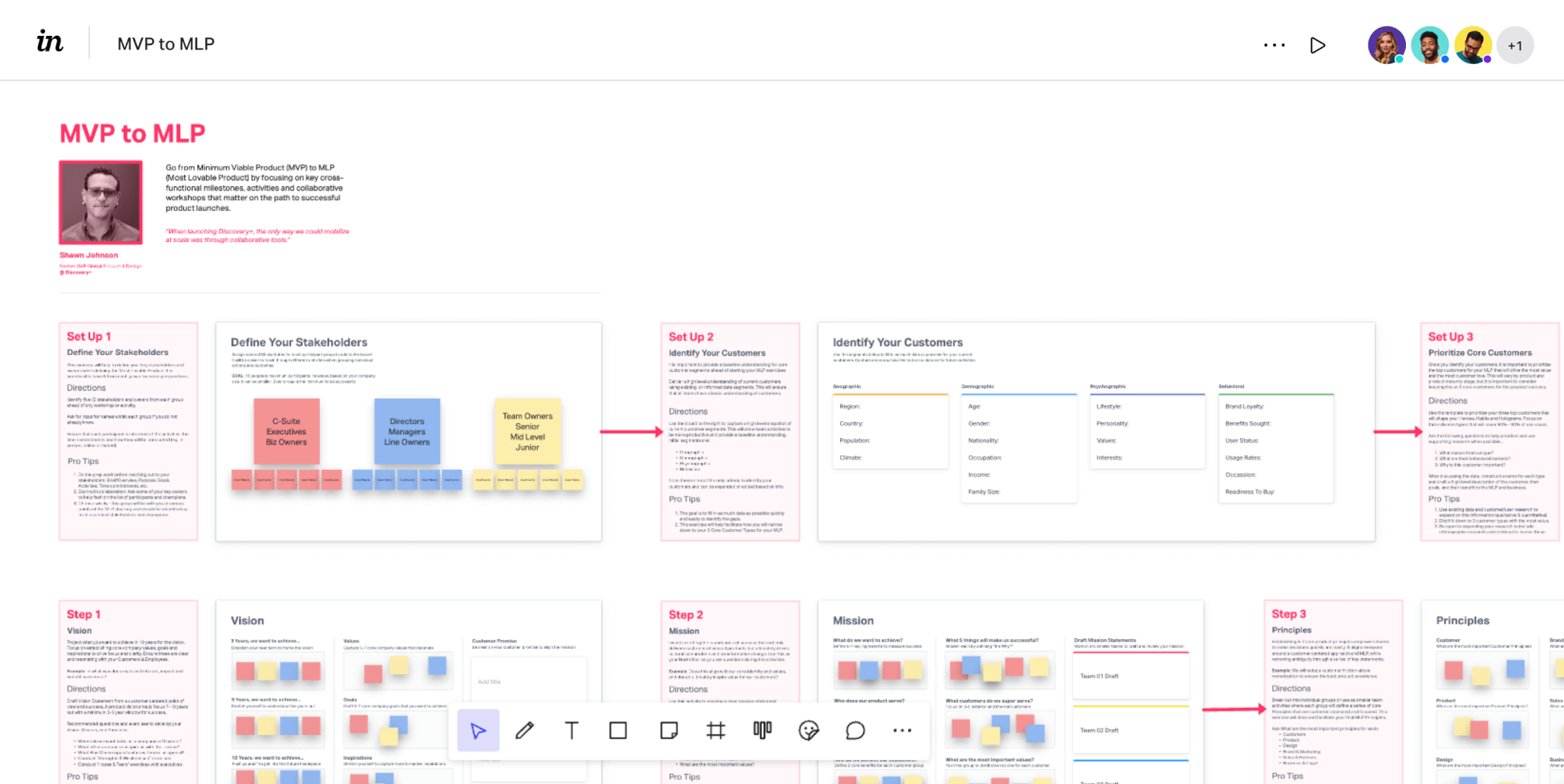
By Kosta Bolgov

This template by Shawn Johnson, Former GVP Global Product & Design @ Discovery+ helps teams go from Minimum Viable Product (MVP) to MLP (Most Lovable Product) by focusing on the key cross-functional milestones that matter on the path to successful product launches.
Use TemplateGo from Minimum Viable Product (MVP) to MLP (Most Lovable Product) by focusing on the key cross-functional milestones that matter on the path to successful product launches.
This template was co-created with Shawn Johnson.
Step by step instructions along with pro-tips are provided inside this template.
Here are the steps that you will need to take to go from MVP to MLP:
This exercise will help to define your key stakeholders and owners while defining the Most Lovable Product. It is beneficial to have 5 from each group for cross perspectives.
It is important to provide a baseline understanding for core customer segments ahead of starting your MLP exercises.
Deliver a high level understanding of current customers using existing, or informed data segments. This will ensure that all teams have a basic understanding of customers.
Once you identify your customers, it is important to prioritize the top customers for your MLP that will drive the most value and the most customer love. This will vary by product and product maturity stage, but it is important to consider keeping this at 3 core customers for the greatest success.
Project what you want to achieve in 10 years for the vision. Focus on establishing core company values, goals and inspirations to drive focus and clarity. Ensure these are clear and resonating with your Customers & Employees.
Invest in setting the foundations of success that not only delivers customer obsessed products, but ultimately drives cultural camaraderie and transformative change. Use this as your North Star as you ask questions during the activities.
Establishing 5-7 core product principles empowers teams to make decisions quickly and easily. It aligns everyone around a customer centered approach and MLP, while removing ambiguity through a series of key statements.
Following stakeholder interviews, small group exercises and workshops, it is important to close the gaps and have the information synthesized and clear for all to communicate.
Whether it is for your product, your campaign, or your company, having clear vision, mission and principles that are focused on the customer is critical for your teams' success.
This exercise enables a quick and easy group activity that helps teams to understand customer tension points in current or future products / features to achieve MLP.
This exercise should be conducted following direct customer interviews as a means to identify key customer wants and needs through discussion and/or product use.
Following direct customer interviews in the prior steps; the goal is to break into three smaller groups to rank each pain point / customer issue into a Minor or Major Problem for your Most Lovable Product.
The outcome is to role play through a customer's point of view to better understand where critical pain points exist.
Mapping out your Top 3 Hero Journeys is one of the most important exercises for your team. This activity is led by Product & Design, but should include key stakeholders.
Habits are really a way to more deeply understand how your customers spend their time, and what is important to them. Each customer may have a different habits when mapped.
This activity provides everyone with a critical reminder to avoid distractions with fringe cases, features and ideas that do not deliver value for the customers and MLP.
Once you have completed the small group exercises to identify the top three for each; it is important to ensure that they easy to communicate to the broader organization.
This singular board allows everyone to stay focused on the most critical parts of the MLP and to align decisions more autonomously during development, testing and delivery.
This template provides a quick and easy way for anyone in the organization to quickly and easily prioritize MLP features and experiences for success. There are three key segments to provide clear prioritization that anyone can use:
This template can be used to explore and define OKRs and objective driven results within your organization or teams.
It is easy to set OKRs that are measurable when you have the right template to empower anyone to be successful.
Use this template to help shape and define the most important measurements for your MLP and organization. These are flexible and can grow, but should not exceed 7 total to keep everyone focused on the customer.